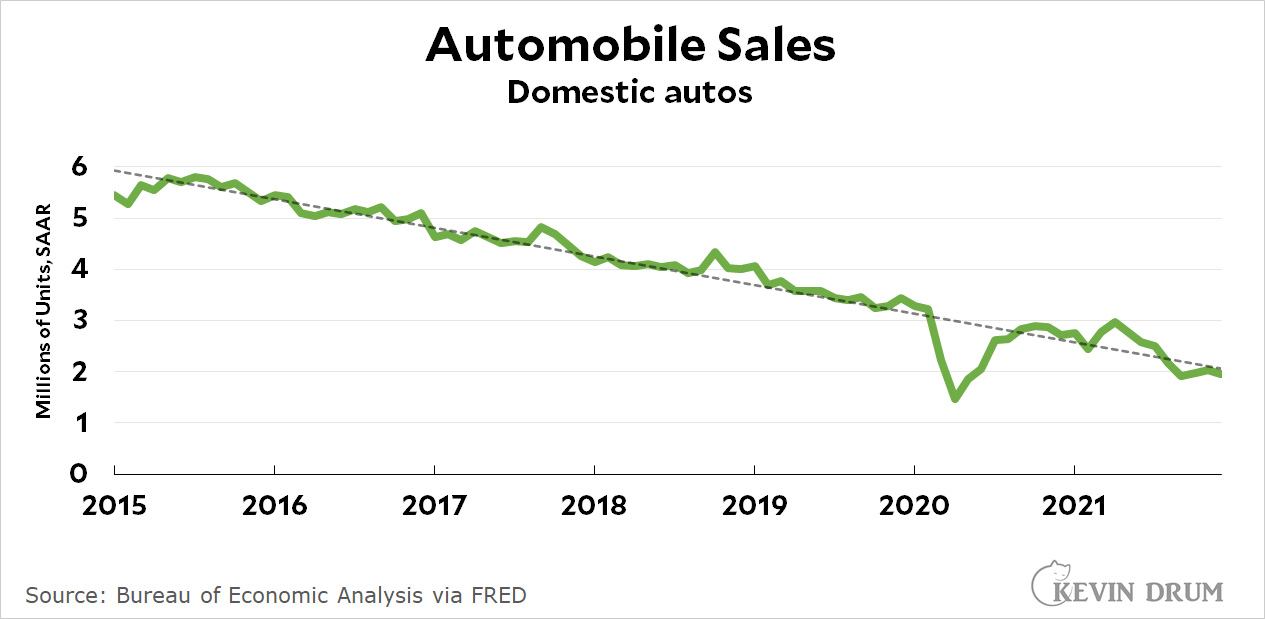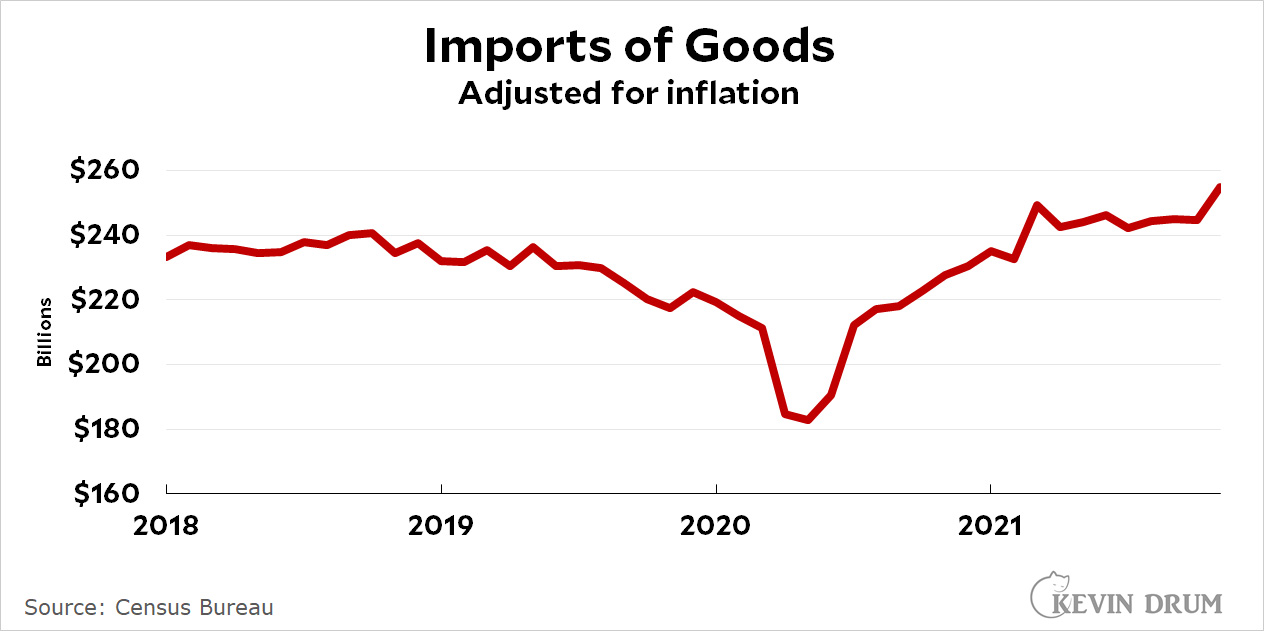In the previous post I mentioned that cars were in short supply in 2021, but apparently I spoke too soon:
After the close of trading Tuesday, GM reported a net profit of $10 billion for 2021. It said full-year pretax profit, which strips out nonrecurring items, rose 47% to a record $14.3 billion. Revenue rose 3.7% last year to $127 billion.
....GM provided a robust outlook for 2022, projecting it could earn between $9.4 billion and $10.8 billion in net income this year. The company said its forecast assumes demand remains steady and there are no significant economic or supply-chain challenges.
....Ford Motor Co. is also expected to report strong profits when it releases year-end results Thursday. In October, it boosted its full-year guidance to $10.5 billion to $11.5 billion, as the company took advantage of easing supply-chain problems and cranked up fourth-quarter production.
The big car companies did suffer from parts shortages, but in the end it looks like they did pretty well. Here's some context behind all those reports of shortages:
 Sales of domestic autos were down, but they've been going down for years. Unit sales in 2021 were precisely on the pre-pandemic trendline. Ditto for domestic auto production. There is little sign here of serious, sustained shortages for domestically made cars.
Sales of domestic autos were down, but they've been going down for years. Unit sales in 2021 were precisely on the pre-pandemic trendline. Ditto for domestic auto production. There is little sign here of serious, sustained shortages for domestically made cars.
[CORRECTION: If you look at all light vehicle sales, including SUVs and trucks, sales were down significantly in 2021. Details here.]
More generally, here are imports of goods in 2021:
 In 2021, imports soared well above our pre-pandemic level. Total imports in November 2021 were 15% higher than they were at the end of 2019. This is yet more evidence that our supply chains were not in crisis. In fact, they were producing far more goods for the US market than ever before in history.
In 2021, imports soared well above our pre-pandemic level. Total imports in November 2021 were 15% higher than they were at the end of 2019. This is yet more evidence that our supply chains were not in crisis. In fact, they were producing far more goods for the US market than ever before in history.

You need to look at cars AND light trucks:
https://fred.stlouisfed.org/series/ALTSALES
Most US sales, especially from the big three, are not considered automobiles. And it would be great if they put definitions of automobiles and light vehicles on those pages--I'm guessing crossovers are light trucks (?)
But yes, profits were fine--first year without big discounts and rebates???
If demand for the goods went up by higher than the imports of those goods increased, we can still have a supply chain crisis...
Kevin has been trying to distinguish between supply and supply chain problems.
Regardless, the point still holds, and it's the same as on the trucking posts: it's entirely possible for there to be a shortage of X AND for there to be more of X than there was before.
Well, Kevin, the next CO2 spewing joy ride you take you should drive past a dozen or so car dealerships both new and used and show us images of non-empty or full lots.
Pingback: Correction: Auto sales were way down in 2021 – Kevin Drum
Some of this has to be a result of cars lasting longer and needing less maintenance. When Japanese cars started to become common in the US back in the 1980s, one of the big selling points was that they lasted longer and that meant higher resale value. American cars took a while to catch up, but I get the impression from Consumer Reports and elsewhere that they have to a large extent.
That long slow decline in sales may just be people keeping their cars longer. They cost more now, so the consumer per year value is about the same, but that could allow for a higher profit margin.